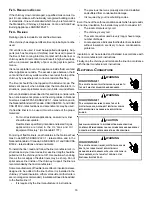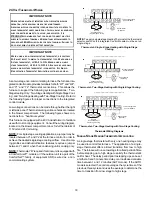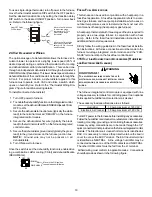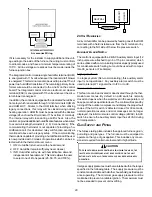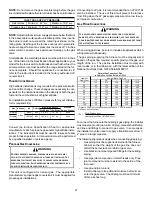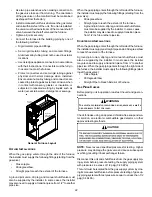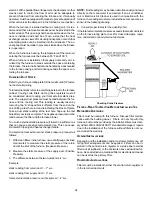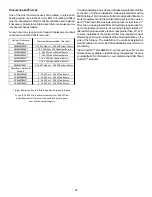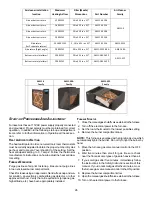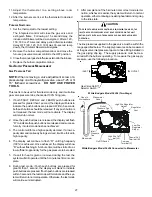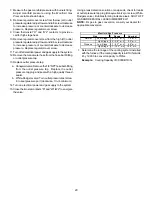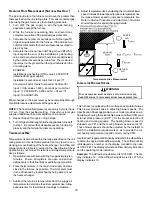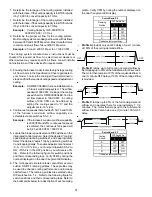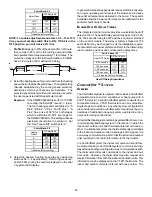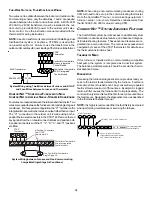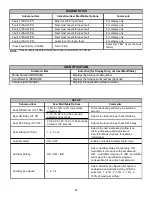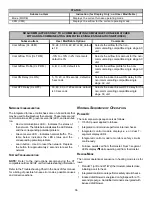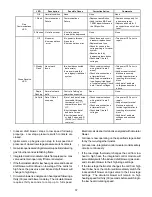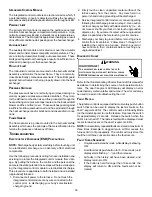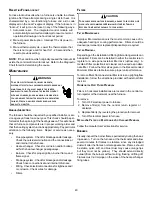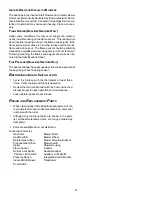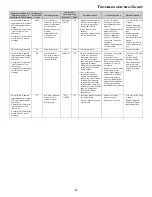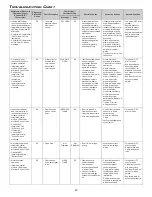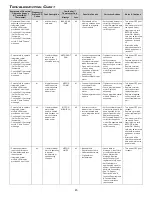
30
4. Adjust temperature rise by adjusting the circulator blower
speed. Increase blower speed to reduce temperature rise.
Decrease blower speed to increase temperature rise.
Refer to
Startup Procedure and Adjustment -Circulator
Blower Speeds
for speed changing details.
SUPPLY
AIR
RETURN
AIR
Temperature Rise Measurement
C
IRCULATOR
B
LOWER
S
PEEDS
T
O
AVOID
PERSONAL
INJURY
OR
DEATH
DUE
TO
ELECTRICAL
SHOCK
,
TURN
OFF
POWER
TO
THE
FURNACE
BEFORE
CHANGING
SPEED
TAPS
.
WARNING
This furnace is equipped with a multi-speed circulator blower.
This blower provides ease in adjusting blower speeds. The
Specification Sheet applicable to your model provides an air-
flow table, showing the relationship between airflow (CFM) and
external static pressure (E.S.P.), for the proper selection of
heating and cooling speeds. The heating blower speed is
shipped set at “B”, and the cooling blower speed is set at “D”.
These blower speeds should be adjusted by the installer to
match the installation requirements so as to provide the cor-
rect heating temperature rise and correct cooling CFM.
Use the dual 7-segment LED display adjacent to the dipswitches
to obtain the approximate airflow quantity. The airflow quantity
is displayed as a number on the display, rounded to the near-
est 100 CFM. The display alternates airflow delivery indication
and the operating mode indication.
Example:
The airflow being delivered is 1225 CFM. The dis-
play indicates 12. If the airflow being delivered is 1275, the
display indicates 13.
G
AS
I
NPUT
R
ATE
M
EASUREMENT
(N
ATURAL
G
AS
O
NLY
)
The gas input rate to the furnace must never be greater than
that specified on the unit rating plate. To measure natural gas
input using the gas meter, use the following procedure.
1. Turn OFF the gas supply to all other gas-burning
appliances except the furnace.
2. While the furnace is operating, time and record one
complete revolution of the smallest gas meter dial.
3. Calculate the number of seconds per cubic foot (sec/ft
3
)
of gas being delivered to the furnace. If the dial is a two
cubic foot dial, divide the number of seconds recorded in
step 2 by two.
4. Calculate the furnace input in BTUs per hour (BTU/hr).
Input equals the sum of the installation’s gas heating
value and a conversion factor (hours to seconds) divided
by the number of seconds per cubic foot. The measured
input must not be greater than the input indicated on the
unit rating plate.
EXAMPLE:
Installation’s gas heating (HTG) value: 1,000 BTU/ft
3
(Obtained from gas supplier)
Installation’s seconds per cubic foot: 34 sec/ ft
3
Conversion Factor (hours to seconds): 3600 sec/hr
Input = (Htg. value x 3600) ÷ seconds per cubic foot
Input = (1,000 BTU/ft
3
x 3600 sec/hr) ÷ 34 sec/ ft
3
Input = 106,000 BTU/hr
Minor changes to the input rate may be accomplished through
manifold pressure adjustments at the gas valve.
NOTE:
The final manifold pressure cannot vary by more than ±
0.3” w.c. from the specified setting. Consult your local gas
supplier if additional input rate adjustment is required.
5. Repeat steps 2 through 4 on high stage.
6. Turn ON gas to and relight all other appliances turned off
in step 1. Be certain that all appliances are functioning
properly and that all pilot burners are operating.
T
EMPERATURE
R
ISE
Temperature rise must be within the range specified on the unit
rating plate. An incorrect temperature rise may result in con-
densing in or overheating of the heat exchanger. An airflow and
temperature rise table is provided in the Specification Sheet
applicable to your model. Determine and adjust temperature
rise as follows:
1. Operate furnace with burners firing for approximately ten
minutes. Ensure all registers are open and all duct
dampers are in their final (fully or partially open) position.
2. Place thermometers in the return and supply ducts as
close to the furnace as possible. Thermometers must
not be influenced by radiant heat by being able to “see”
the heat exchanger.
3. Subtract the return air temperature from the supply air
temperature to determine the air temperature rise. Allow
adequate time for thermometer readings to stabilize.

